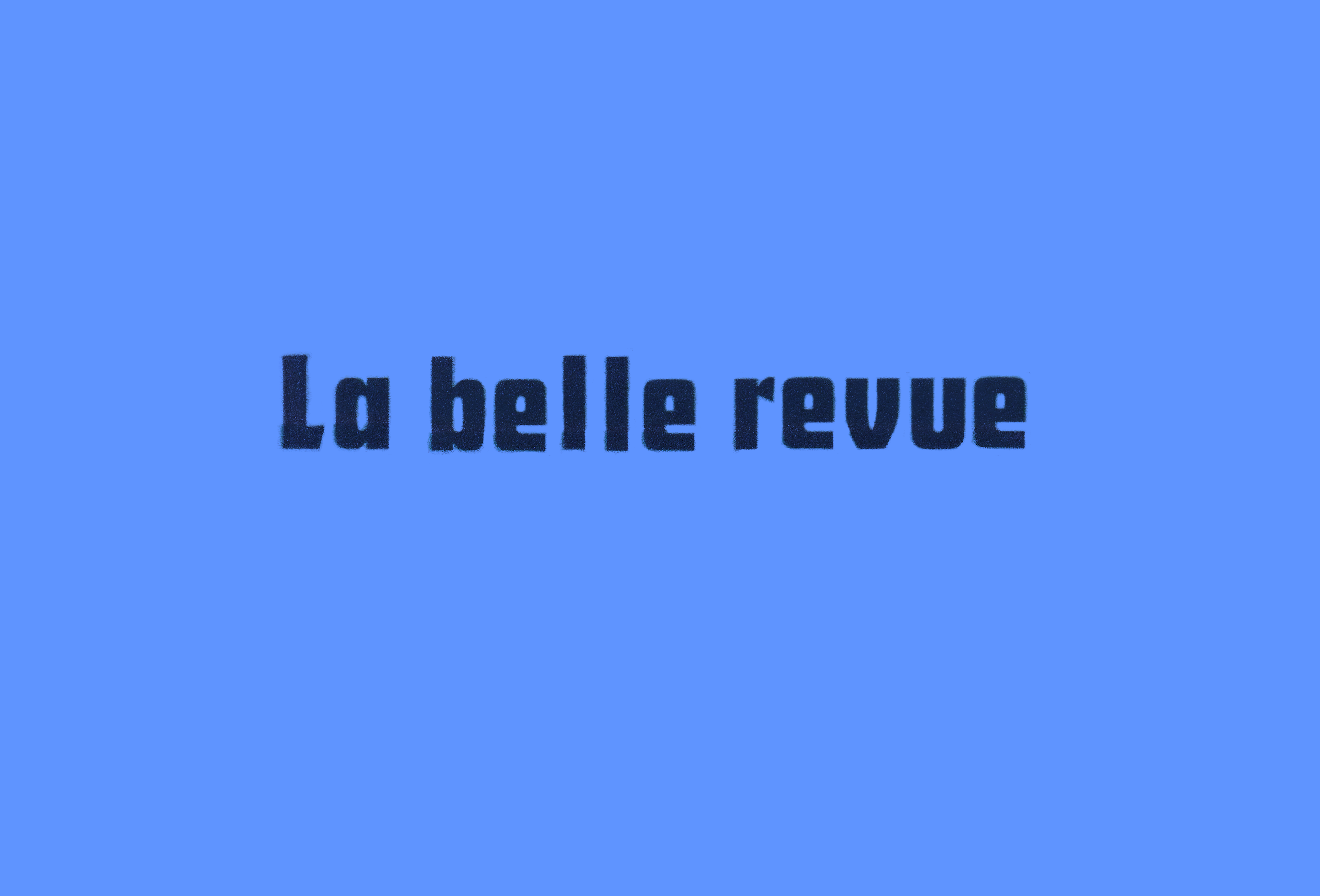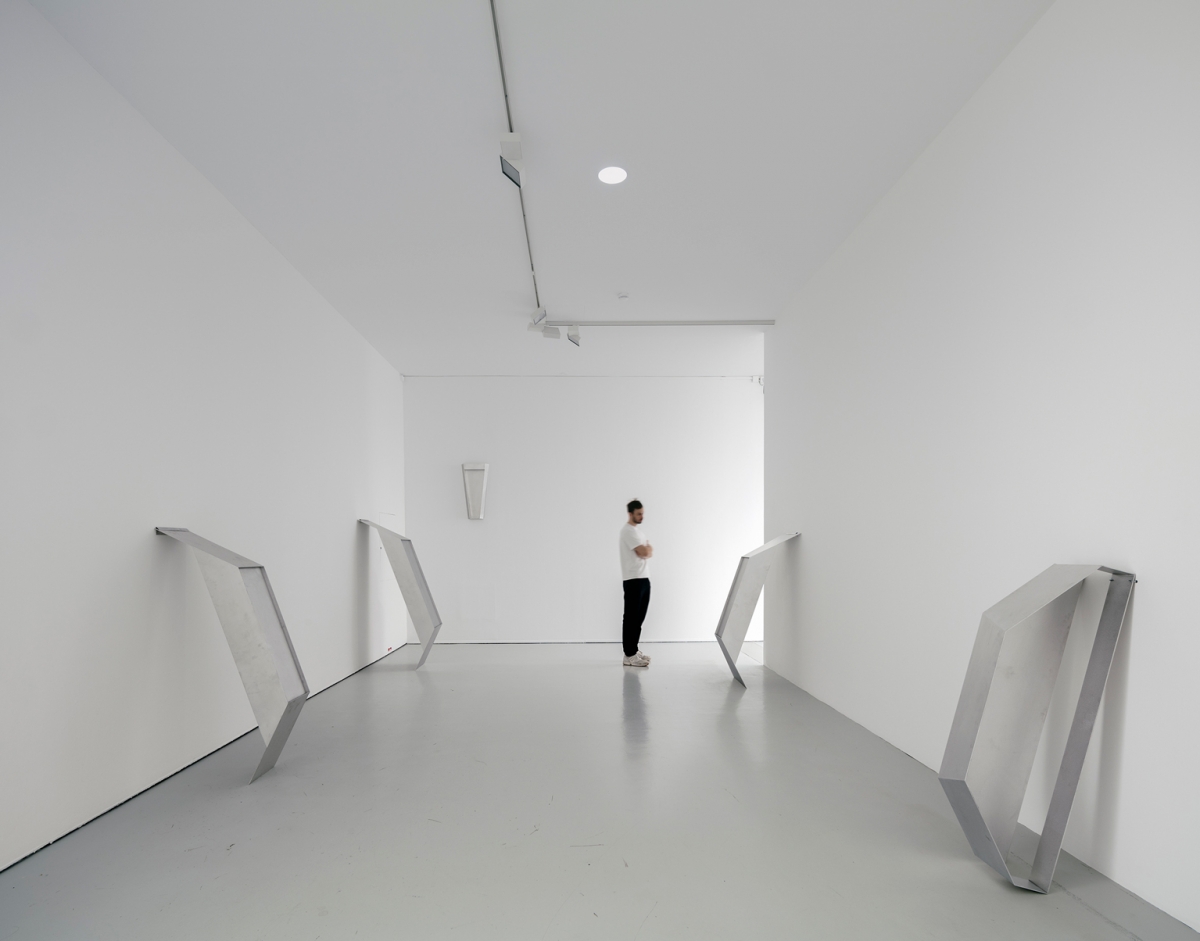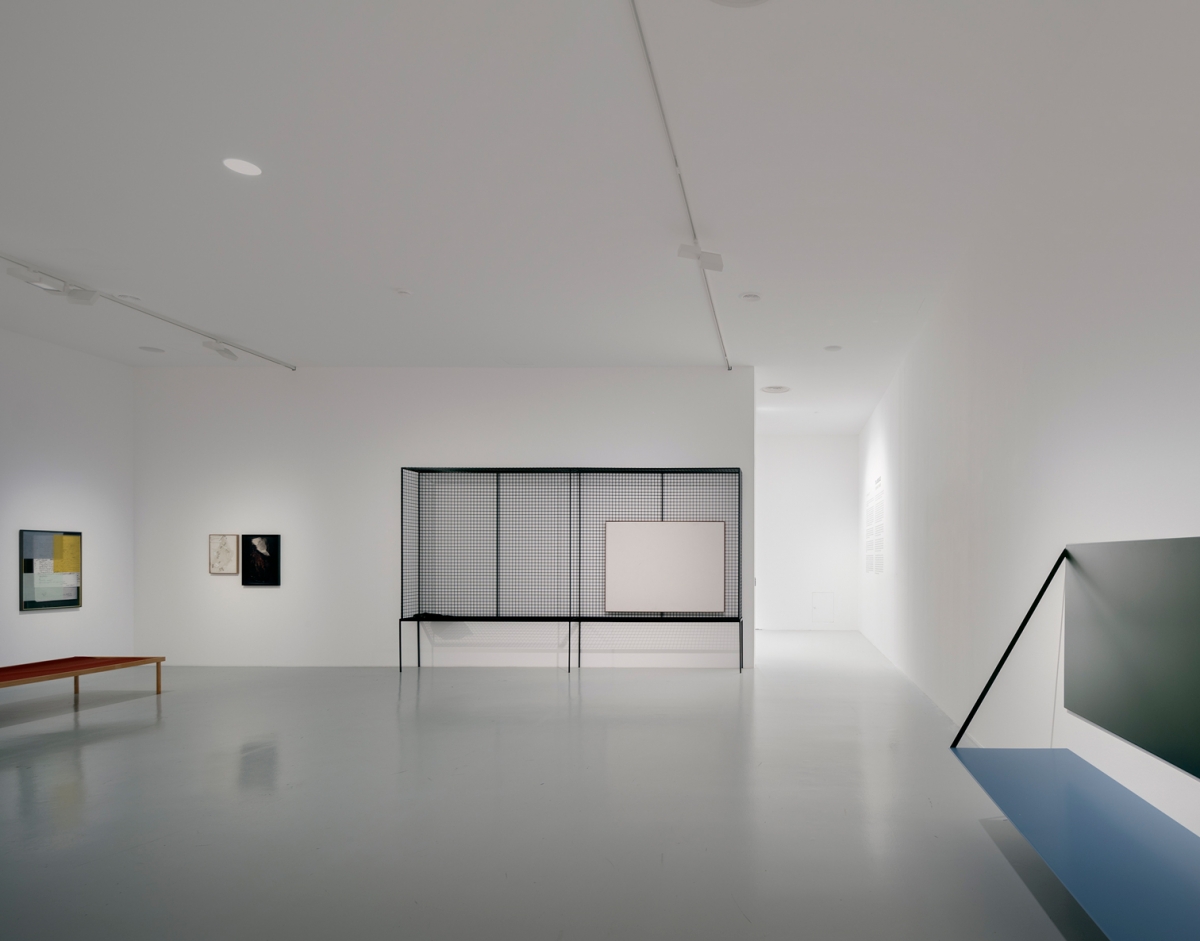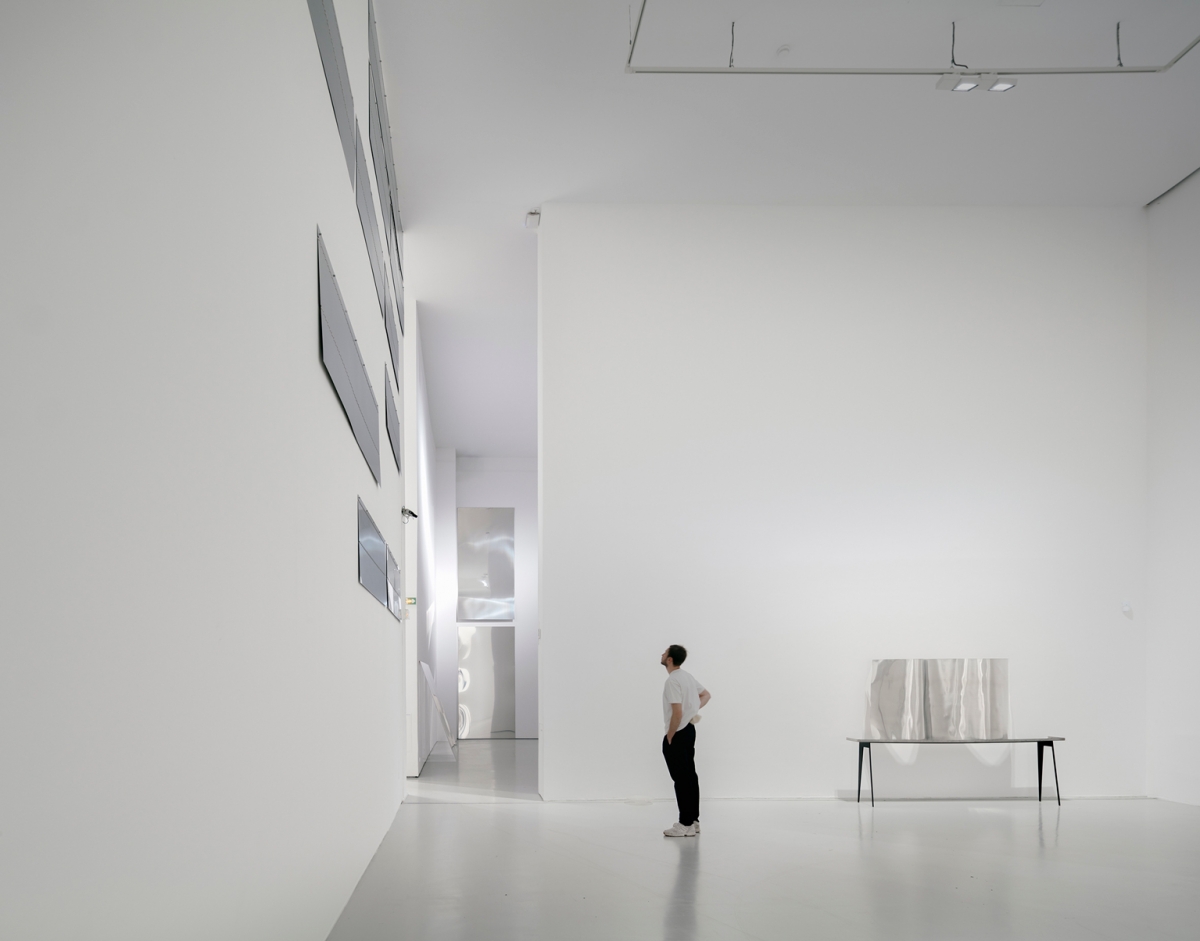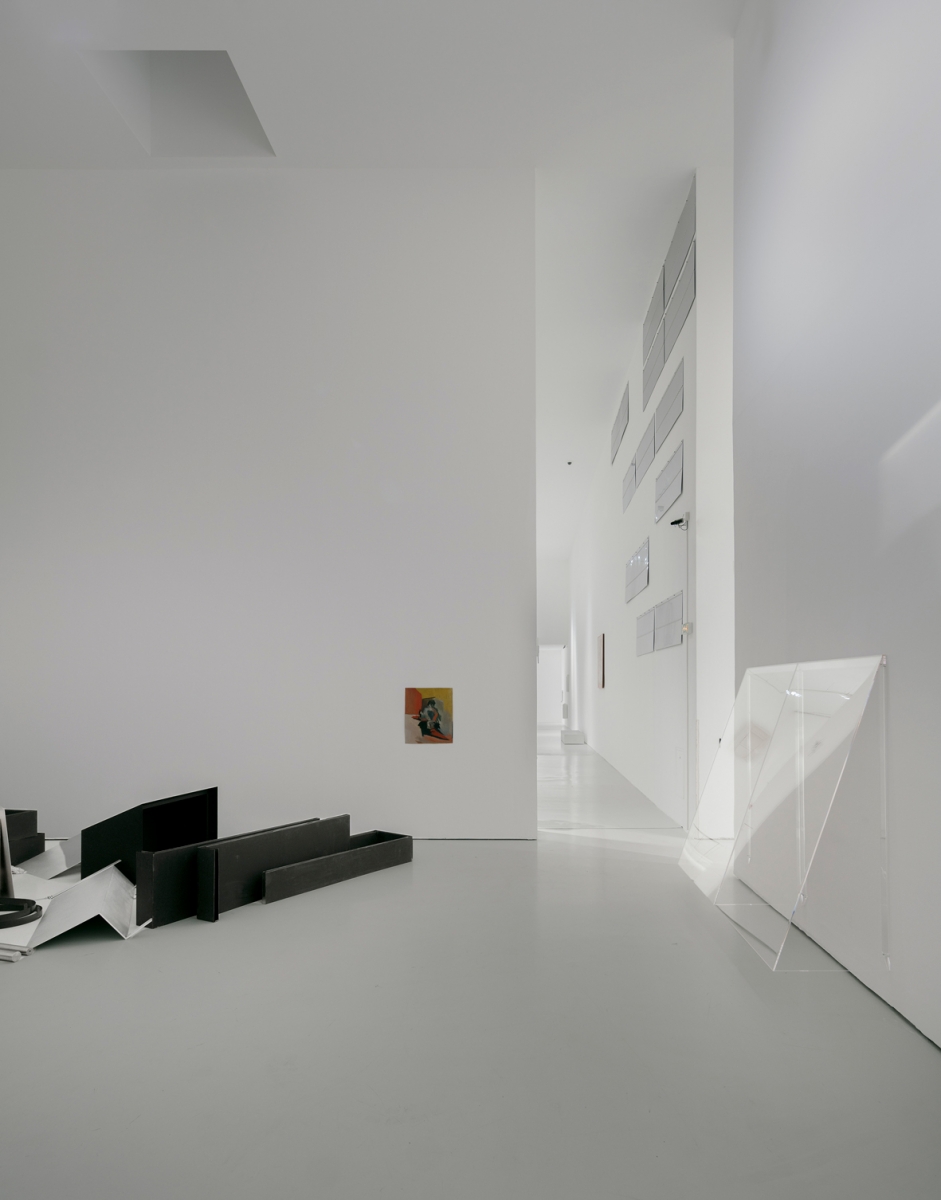For Thea Djordjadze’s first major presentation in France displaying more than sixty artworks, produced between 1993 and 2021, the gestures in the rooms needed to be powerful, forceful, even. I use the word forceful here for a number of reasons, the most obvious being the undeniable context of presenting the Georgian artist’s work during the lead-up to the current violence and refugee crisis inflicted by Russia on yet another neighboring nation, this time, Ukraine. I left each room longing for the force of brute retaliation, like a strategy of a war, with firm and sincere decisions about the placement and combinations of the works. At times, I thought to myself somewhere inside the five rooms that maybe this isn’t actually a forceful gesture, but rather a non-urgent evacuation plan. Is this what might be left if one would have to absurdly flee, each room developing an argument for the last and most grandiose gesture?
The title of the exhibition, Se Souvenir et Témoigner [To record and testify] – one of Djordjadze’s more personal titles to date – also gives the viewer a frame of imagining an event that must have occurred. Those familiar with the artist’s work have come to expect sleek and cool investigations into spaces, design and architecture. Not often within this artist’s minimalist sculptures and works do we find her hand, nor her heart. But since we are tasked with recording and testifying here, I searched to find her hand, her heart, and was able to feel some of her exasperation and her poetry.
The more meditative, albeit disturbing part of the exhibition was the smallest room filled with a series of six sibling-like aluminum sculptures from 2021. The room was unreachable without going through the rest of the exhibition, stuck in the middle with no added lighting. Most of the meter-tall forms were leaning against the wall while others were installed at head-height. Given the lighting situation, it felt like I was strolling at dusk in a public space, just before the city lights would illuminate, if they would turn on at all.
The exhibition at the Musée d’art Moderne et Contemporain à Saint-Etienne dedicates five rooms to Djordjaze in the form of an L, with the junction between the short part and the long part of the L slightly snaking with low-lighting and low ceilings. The more elegant part of the exhibition was in the final two rooms, where the sophisticated, modern architecture of Didier Guichard’s building can be felt more fully conversing with the works. Djordjadze herself designed the combinations of the works of her twenty-plus year career in-situ, creating a never-before-seen installation and referencing process-based artists and exhibitions before her. Perhaps an urgency comes from the never-before-seen’ness of the exhibition? Yet, it lacked intensity, and a grand gesture only arrived in the final moment– which could have perhaps even felt insincere to some.
If I keep referring to this final, grand finale room, it is because I was anticipating it without knowing it. In room 5, we discover the (wo)man-behind-the-curtain moment, the backstage, or the archives and storage room which itself is a recognized oeuvre, Untitled (2022). From this room of materials that Djordjadze has continually worked with – including foam, gridded furniture, glass forms, wood, plaster, carpeting, aluminum, steel, bricks, plexiglass, older paintings and framed works – the spectator can imagine the artist making aller-retours and throwing more materials in the assemblage, watching it grow. Or making the aller-retours and taking stuff from piles, putting it back in conversation with another piece in another room. We imagine the performance and gestures of creating this in-situ labor, maybe with urgency, but lacking force. The addition of the oldest work in the exhibition – a small untitled figurative oil painting on cardboard from 1993 on the margins of the untitled mixed media assemblage donning stickers from her gallery – underlines Djordjaze’s personal arc from unsatisfied painter to Sprüth Magers’ star. But I wonder what is the urgency of that memory.
